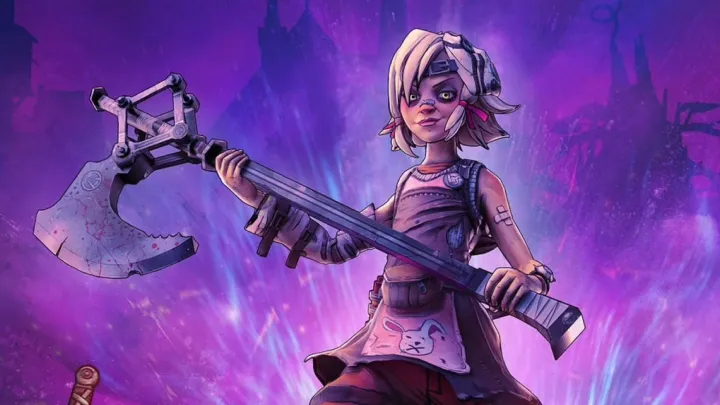
Introduction
Tiny Tina's Wonderlands, a spin-off from the Borderlands series, thrusts players into a whimsical tabletop role-playing game (RPG) experience filled with frenetic action, humor, and eccentric characters. At its core, the game serves not only as a love letter to traditional fantasy RPGs but as a critique of the very tropes that define the genre. Tiny Tina, the game's lead character, acts as both the Dungeon Master and the instigator of chaos, shaping narrative arcs while playfully dismantling expectations. This article delves deeply into the subversion of narrative tropes within Tiny Tina's Wonderlands, examining how it challenges conventional storytelling mechanisms to explore themes of agency, identity, and the boundaries of imagination.
Setting the Stage: The Whimsical Realm of Wonderlands
A Fantasy Setting with Familiar Tropes
Tiny Tina's Wonderlands immerses players in a vibrant and chaotic world, blending elements of traditional fantasy with the irreverent humor characteristic of the Borderlands series. The game is set in a custom fantasy land known as the Wonderlands, where players must fight mythical creatures, gather loot, and ultimately confront the main antagonist, the Dragon Lord.
- Clichéd Frameworks: At the outset, players encounter conventional fantasy tropes, such as heroic quests, mythical creatures, and epic battles. The game's whimsical nature tempts players to accept these clichés without question, allowing them to indulge in the familiar comforts of RPG storytelling.
- Tiny Tina’s Role: As the self-proclaimed "Bunker Master," Tiny Tina curates the narratives that unfold, controlling both plot progression and the characters involved. Her uninhibited imagination adds a layer of unpredictability to the game, teasing players with moments that both adhere to and subvert expectations.
This initial setting creates fertile ground for exploring critically how traditional narratives can be manipulated and ultimately rewritten.
The Player’s Agency in Narrative Construction
Tiny Tina's Wonderlands is distinctly shaped by the player’s agency, emphasizing that the narrative is not merely a preset script to follow but a dynamic framework that evolves based on player decisions.
- Character Customization: Players have the ability to create and customize their character, known as the Fatemaker, choosing unique classes, skills, and appearances. This customization reinforces the idea that players are not passive recipients of a story; they are active participants in shaping their adventure.
- Dynamic Storytelling: The intertwining of player choices with Tiny Tina’s whimsical guidance amplifies the game’s core theme of agency. Players can influence outcomes, change the direction of quests, and interact with other characters in ways that personalize their experience. The freedom to shape one’s narrative is intrinsically linked to pushing back against the traditional constraints of storytelling.
By positioning players as active creators within the story, Tiny Tina's Wonderlands challenges conventional narrative mechanics, allowing for more engaged and participatory storytelling experiences.
The Art of Subversion: Dismantling Tropes
Breaking the Fourth Wall
Tiny Tina’s character consistently breaks the fourth wall, drawing attention to the game’s mechanics, choices, and the very nature of storytelling. This self-awareness adds layers of depth to the narrative, allowing for comedic moments that resonate with players familiar with the genre.
- Meta-commentary on RPGs: The game cleverly critiques traditional RPG elements by addressing clichés directly. For example, the linearity of quests and predictable character arcs are jokingly pointed out, prompting players to reflect on the tropes they often accept without questioning.
- Player Reflection: Tiny Tina’s commentary encourages players to consider their relationship with the gaming medium. Moments where she acknowledges the absurdity of certain game mechanics prompt introspection about the nature of player agency and immersion framed within fantastical narratives.
The breaking of the fourth wall serves as a mechanism for both humor and critique, allowing players to engage critically with the game’s narrative.
The Antagonist: A Subversion of Evil Tropes
The Dragon Lord, as the game's primary antagonist, serves as a representation of traditional villain stereotypes but is infused with characteristics that subvert player expectations.
- Complex Characterization: Initially presented as a classic dark lord archetype, the Dragon Lord’s background and motivations are eventually unveiled, providing a deeper understanding that complicates his portrayal. He embodies the trope of the misunderstood villain, creating a sense of empathy that challenges conventional views of evil.
- Identity and Transformation: The evolution of the Dragon Lord mirrors that of the player characters, introducing themes of identity and the fluidity of good and evil. The narrative positions players to question their preconceived notions of villainy, emphasizing that motivations can be richly layered beyond a straightforward quest for power.
This subversion invites players to engage in nuanced discussions about morality and identity, showcasing how even antagonistic roles can reflect complex emotional landscapes within a narrative.
The Role of Humor in Subverting Expectations
Comedy as a Narrative Tool
Tiny Tina's Wonderlands employs humor as a central pillar of its storytelling, using it not only to entertain but also to deconstruct familiar narrative devices and tropes. The abundance of comic relief intertwines with critical commentary on traditional RPG elements.
- Satirical Elements: The humor ranges from silly, over-the-top moments to sharp satire targeting fantasy conventions. Moments where characters bumble through familiar tropes provide laughs but also prompt players to think critically about the narratives they consume.
- Leveraging Jokes for Depth: The game uses comedic situations to introduce serious themes. For example, absurd encounters with enemies may lead to deeper reflections on the nature of violence, ambition, and the cost of chasing one’s dreams. This blending of comedy and weighty themes creates a unique narrative experience.
Through humor, Tiny Tina's Wonderlands manages to subvert traditional storytelling while maintaining engagement, allowing critical themes to surface even amid silliness.
The Ludonarrative Harmony
In a significant departure from traditional RPGs, the humor and gameplay mechanics in Tiny Tina's Wonderlands work in harmony to reinforce the game’s themes of agency and identity.
- Gameplay Elements: Players engage in humorous mini-games, quirky side quests, and interactions that reflect the whimsical tone of the narrative. The mechanics often contribute to the comedic experience rather than serve as mere gameplay filler.
- Narrative Integration: The seamless blend of gameplay and narrative reinforces Tiny Tina’s chaotic and imaginative vision. Players are encouraged to embrace the absurdity of the world and respond to it creatively through both actions and interactions, enhancing their engagement with the story.
This ludonarrative harmony solidifies the game's critique of genre conventions while creating an interactive experience that reinforces its themes.
Themes of Identity and Self-Exploration
Identity in a Whimsical Context
In Tiny Tina’s Wonderlands, the exploration of identity is a central narrative theme, particularly in how characters view themselves versus how others perceive them. As players explore various quests and interactions, they encounter characters grappling with their identities.
- Self-Perception vs. Societal Expectations: Characters often face internal struggles related to their roles within the fantasy landscape. Many characters question their worth and purpose, reflecting common human experiences of self-doubt and exploration.
- Fluid Identities: The ability to customize characters underscores the theme of self-exploration. Players are invited to experiment with different identities, embodying classes that resonate with aspects of their personalities. This feature emphasizes that identities are not fixed but can evolve based on choices and experiences.
By weaving these themes of identity throughout character arcs and quests, the game fosters a climate of introspection and growth for players.
Characters’ Journeys Towards Empowerment
Throughout the game, various characters undergo transformative journeys that reflect broader themes of empowerment and self-acceptance. Tiny Tina serves as a guide for these stories, facilitating growth through her chaotic narrative style.
- Empowerment Through Play: Each character's progression illuminates themes of taking control over one’s fate. By confronting their fears and societal judgments, they regain agency and learn to define themselves on their own terms. This mirrors Tiny Tina's own journey of empowerment as she navigates the complexities of her imaginative narrative.
- Communal Support: The overlapping narratives between characters highlight the importance of building connections and supporting one another throughout their journeys. Characters experience growth not only individually but within the context of their relationships with each other, suggesting that empowerment occurs most dramatically in a supportive environment.
These transformative narratives serve to inspire players to embrace their identities, fostering a sense of hope and agency amidst the whimsical chaos.
The Role of Imagination in Bridging Realities
Blurring the Lines Between Fantasy and Reality
A significant element of Tiny Tina’s Wonderlands is how it blurs the lines between the fantastical and the real, allowing players to reflect on their identities within both spheres.
- Meta-Reflection on Fantasy: By incorporating imaginative elements and self-aware storytelling, the game invites players to find parallels between the game’s world and their own lives. Themes of escape, agency, and adventure resonate with players’ real-life struggles and aspirations.
- Imaginative Freedom: Tiny Tina’s unrestrained creativity serves as a celebration of imagination. The game suggests that, through fantasy and storytelling, individuals can explore identities, confront fears, and embrace transformative journeys—both in-game and in their lives.
This exploration highlights the therapeutic aspects of imagination, demonstrating how narratives can facilitate personal growth through imaginative play.
The Shift from Play to Reality
As players engage with the fantastical elements of Tiny Tina's Wonderlands, they confront the inherent implications of play and its connection to identity formation.
- Games as a Medium for Exploration: The structure of the game encourages players to embrace their choices and make active decisions while navigating quests, reinforcing how gaming can function as a powerful exploration of self and world.
- Reality Check: Throughout the game, moments arise that return players to the reality behind the fantasy. These “reality check” moments prompt players to reflect on the lessons learned from their adventures and their significance in the real world, reinforcing the notion that identity is influenced by both personal agency and social contexts.
By intertwining imaginative play with moments of reflection, Tiny Tina's Wonderlands encourages players to embrace an ongoing journey of self-discovery.
Conclusion: Crafting a New Narrative Experience
Tiny Tina's Wonderlands stands as an innovative entry within the gaming landscape, a vibrant narrative that expertly subverts traditional RPG tropes to explore themes of identity, agency, and the imagination. The game’s blend of whimsical humor, meta-commentary, and player-driven storytelling compels players to rethink their relationships with narrative conventions, while its rich character journeys highlight the nuanced complexities of self-exploration.
Beyond entertainment, Tiny Tina's Wonderlands fosters introspection, prompting players to consider their identities, their connections with others, and the role that imagination plays in shaping their realities. Ultimately, the game invites players to engage not just with a fantastical narrative but with their own personal journeys, illustrating how stories—whether in the realm of fantasy or reality—can serve as powerful catalysts for transformation and empowerment.


















